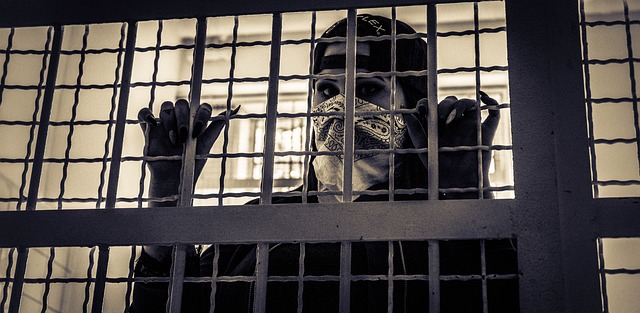Global impaired driving laws are evolving towards stricter enforcement, leveraging Emerging Technologies in DUI Law such as advanced breathalyzers, AI-driven sobriety checks, and real-time tracking. These innovations aim to deter drunk and drugged driving, enhancing road safety worldwide. While presenting legal challenges like due process and privacy concerns, these technologies offer improved impairment detection. The introduction of self-driving vehicles further complicates traditional DUI definitions and liability. International cooperation is crucial for sharing best practices and establishing uniform standards, promoting consistent enforcement through advanced methods like data analytics and predictive risk models.
Impaired driving remains a global challenge, with varying legal landscapes and evolving technological advancements impacting enforcement. This article explores the comprehensive spectrum of global perspectives on impaired driving, from a comparative study of international laws to the latest emerging technologies in DUI law. We delve into the challenges posed by self-driving vehicles and analyze best practices for international cooperation to combat this pervasive issue, highlighting the pivotal role of data analytics in prevention.
- The Global Landscape of Impaired Driving Laws: A Comparative Study
- Emerging Technologies in DUI Enforcement: From Breathalyzers to AI
- Challenges Posed by Advancing Technology in DUI Prosecution
- Self-Driving Vehicles and the Future of Impaired Driving Laws
- International Cooperation in Combating DUI: Best Practices and Strategies
- The Role of Data Analytics in Predicting and Preventing Impaired Driving
The Global Landscape of Impaired Driving Laws: A Comparative Study

The global landscape of impaired driving laws varies significantly from country to country, reflecting unique cultural and societal norms. A comparative study reveals diverse approaches to addressing drunk and drugged driving, with some nations employing stringent penalties while others take more lenient stances. Emerging technologies in DUI (Drunk Driving Under the Influence) law are reshaping these regulations worldwide. For instance, the implementation of advanced breathalyzer devices capable of detecting drug intoxication alongside alcohol is becoming more common.
Additionally, countries are exploring innovative solutions such as random sobriety checks using artificial intelligence and facial recognition technology, along with the adoption of real-time tracking systems for repeat offenders. These developments underscore a global trend towards stricter enforcement and more sophisticated legal frameworks aimed at curbing impaired driving. The effective integration of emerging technologies promises to enhance road safety by deterring potential DUI offenses.
Emerging Technologies in DUI Enforcement: From Breathalyzers to AI

The evolution of technology has significantly impacted how law enforcement agencies tackle impaired driving, with a continuous stream of innovations aimed at enhancing safety and accuracy. One of the most well-known tools in this field is the breathalyzer, which measures blood alcohol content through a simple breath test. However, emerging technologies are pushing the boundaries of DUI (Drunk Driving Under the Influence) enforcement even further. Artificial Intelligence (AI), for instance, is being leveraged to analyze data patterns and predict high-risk areas, enabling targeted police patrols.
These advanced systems can process vast amounts of information, including historical data on past impaired driving incidents, traffic flow patterns, and real-time sensor data from vehicles, to identify potential hotspots. Additionally, AI-powered camera systems equipped with computer vision capabilities are being deployed to detect driver behavior anomalies, such as erratic lane changes or slow response times, which may indicate impairment. Such technological advancements not only assist in maintaining public safety but also contribute to more effective and efficient DUI enforcement strategies globally.
Challenges Posed by Advancing Technology in DUI Prosecution

The advancement of technology presents unique challenges and opportunities for DUI (drunk or impaired driving) prosecution, fundamentally altering how law enforcement agencies and legal professionals approach this global issue. Emerging technologies like advanced data analytics, artificial intelligence (AI), and sophisticated sensor systems offer immense potential to enhance safety on the roads. For instance, AI-powered sensors can detect impairment levels with greater accuracy than traditional field sobriety tests. However, these technological advancements also raise complex legal questions. As law enforcement integrates these tools into their operations, ensuring due process, privacy protections, and the admissibility of technology-driven evidence in court becomes paramount.
Moreover, the rapid pace of technological change means that legal frameworks may struggle to keep up. The legal system must adapt to incorporate new methods for gathering evidence, such as breathalyzer updates or advanced eye-tracking devices, while navigating potential issues related to data security and the reliability of automated systems. Balancing innovation with established legal principles is essential to ensure effective DUI prosecution without compromising fairness and accuracy in the justice system.
Self-Driving Vehicles and the Future of Impaired Driving Laws

The advent of self-driving vehicles marks a significant shift in how we perceive impaired driving laws, ushering in an era of potential transformation within the emerging technologies in DUI law landscape. As autonomous cars become more prevalent on our roads, traditional definitions of impairment and liability may need to evolve to accommodate their unique capabilities and limitations.
These vehicles rely on advanced sensors, cameras, and artificial intelligence to navigate, raising questions about how alcohol or drug impairment would be measured and enforced. For instance, what constitutes driving under the influence for an autonomous vehicle? Would it be based on sensor malfunction due to intoxication or the driver’s decision-making abilities when faced with an emergency? The future of impaired driving laws may involve adjusting regulations to consider not only blood alcohol content but also the performance and integrity of these emerging technologies.
International Cooperation in Combating DUI: Best Practices and Strategies

International cooperation plays a pivotal role in combating impaired driving globally, as it allows countries to share resources, expertise, and best practices. This collaboration is essential given the borderless nature of modern transportation and the consistent evolution of alcohol- and drug-impaired technologies. Through partnerships at regional and international levels, nations can establish uniform standards and guidelines for DUI laws, ensuring consistency in enforcement and penalties. By harmonizing legal frameworks, countries can create a comprehensive network aimed at deterring impaired driving and enhancing road safety worldwide.
Emerging technologies have significantly influenced DUI law, necessitating continuous adaptation and innovation in detection methods and prevention strategies. International cooperation facilitates the exchange of information on these technological advancements, enabling countries to implement cutting-edge solutions more effectively. For instance, the use of advanced breathalyzer devices, real-time data analytics for traffic monitoring, and mobile applications for public awareness campaigns have shown promise in reducing DUI incidents. By sharing success stories and challenges, nations can collectively refine these strategies, ultimately contributing to a safer global transportation network.
The Role of Data Analytics in Predicting and Preventing Impaired Driving

The integration of data analytics has emerged as a powerful tool in predicting and mitigating impaired driving, one of the critical emerging technologies in DUI law. By analyzing vast datasets encompassing historical driving records, traffic patterns, and behavioral trends, advanced algorithms can identify high-risk areas, times, and individuals susceptible to driving under the influence (DUI). This predictive capability allows enforcement agencies to deploy resources more effectively, setting up sobriety checkpoints or increasing patrols in targeted locations during peak hours when DUI incidents are most likely to occur.
Furthermore, data analytics enables the development of sophisticated risk assessment models that go beyond traditional factors like blood alcohol concentration (BAC) levels. These models consider diverse variables such as driver age, gender, previous offenses, and even weather conditions, providing a comprehensive view of potential DUI risks. Such insights can inform public safety initiatives, policy reforms, and educational campaigns tailored to specific demographics, ultimately contributing to the prevention of impaired driving and reducing road accidents globally.
Global perspectives on impaired driving reveal a complex landscape that demands innovative solutions. The article has explored various aspects, from comparative studies of international laws to the potential impact of self-driving vehicles and emerging technologies like AI. As we navigate this evolving spectrum, fostering international cooperation and leveraging data analytics are crucial steps towards effective DUI enforcement and safer global roads. Emerging technologies in DUI law hold promise for enhanced detection and prevention, but they also present challenges that must be carefully navigated.






